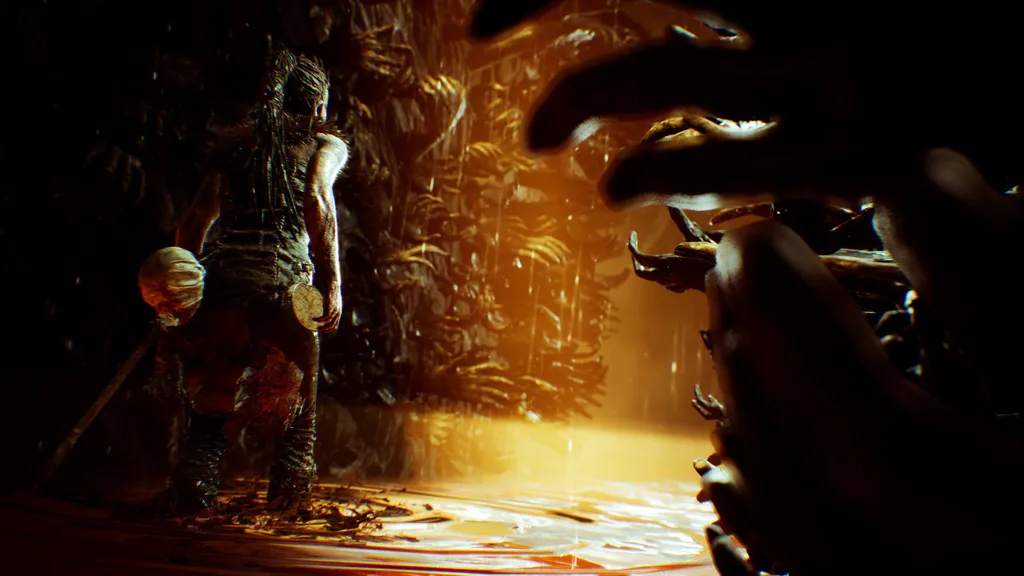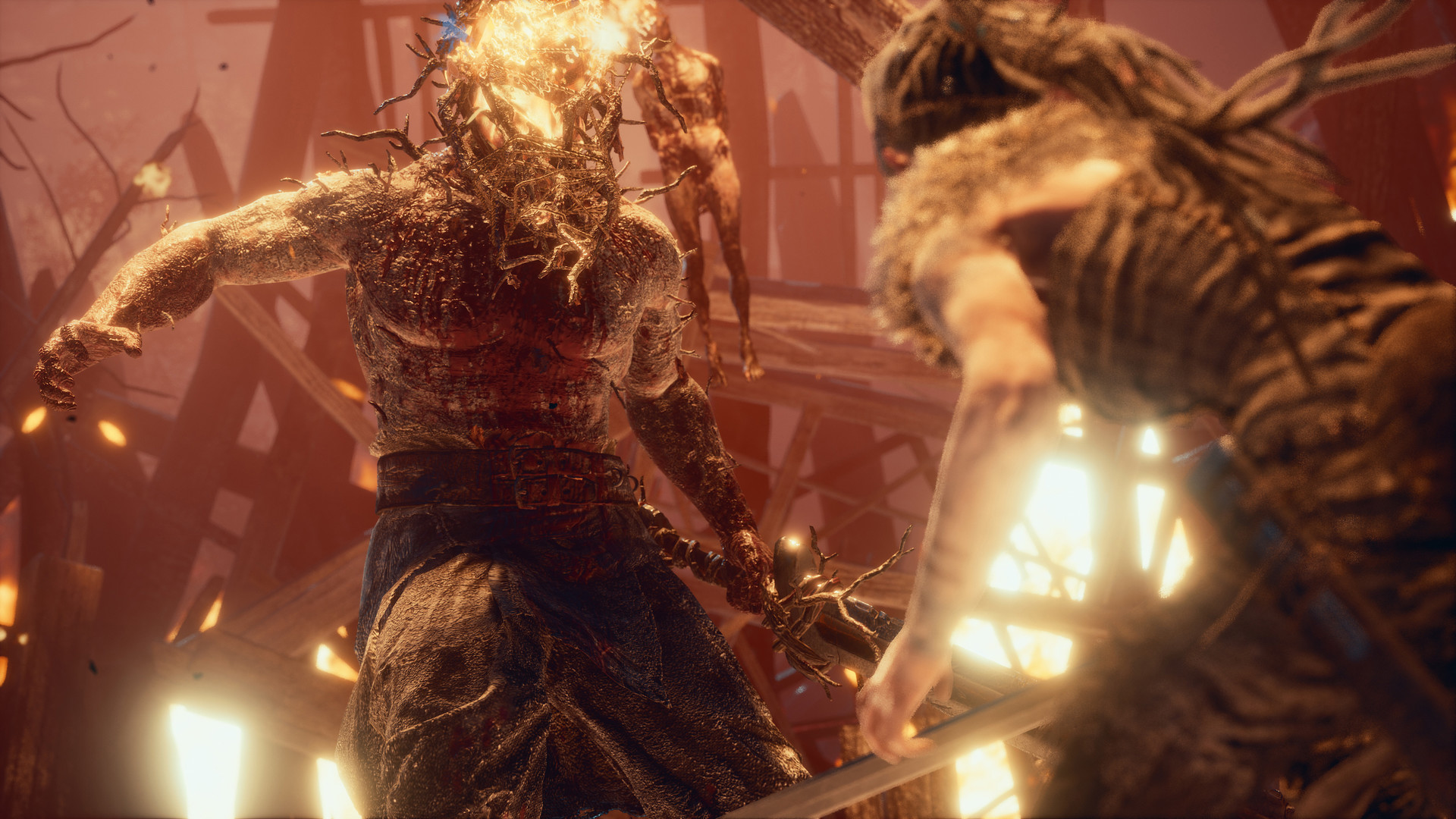I remember the moment that I realized playing a game like Hellblade in VR would be unlike everything else I’ve played before. During a tense fight with an enemy early on in the game I was very low on health. One of the voices in my head that’s constantly taunting, nagging, and whispering to Senua throughout her journey yelped “Behind you!” and I physically spun my head around to see another enemy lunging with a sword, so I pressed the block button and parried the blow perfectly. Had it not been for that ability to turn and look — and my instinct to follow directions from the voice in my head — I likely would have died.
Small moments like that are great examples of how VR can be used to enhance an otherwise non-VR game. Not every game needs VR support, but most games would be more immersive and engrossing if it was done well. Hellblade: Senua’s Sacrifice outside of VR was already one of the best games this entire generation with ominous psychological overtones and a highly atmospheric setting, so adapting that world to VR only enhances what already made it so great to begin with.
In Hellblade you take on the role of Senua as she descends into the depths of Nordic Hell, otherwise known as Helheim, on a quest to save the soul of her lost lover. Throughout the adventure you’re besieged by twisted, demonic creatures that engage you in ferocious melee combat. The journey consists of battling back these deranged creatures, exploring dark, twisted worlds, and uncovering the meaning behind cryptic symbols and puzzles.
What underscores everything though is the bold and brilliant presentation. Visually it’s one of the most stunning games (VR or otherwise) that I’ve ever played and I’m honestly hard-pressed to think of a better looking experience inside of a VR headset. The sound design is second-to-none as voices race through Senua’s head and across each of your ears. One voice may whisper words of encouragement while another sneers insults and discredits your actions. Flickers of images and brief hallucinations appear on-screen and you’re constantly questioning everything that you do and see for the entire 6-8 hour journey.
Combat in Hellblade is thrilling and intense. It’s nowhere near as deep as other third-person action games you may have played recently, but it doesn’t need to be. Senua can issue light and heavy attacks, dodge, block, and parry. Eventually you unlock some otherworldly abilities and time manipulation, which looks amazing in VR, but that’s the gist of it. You time your blocks to parry attacks, string together combos, and juggle multiple enemies that quickly try to surround and overwhelm you.
Being able to crane your neck around and marvel at the amazing environment is a huge reason why playing Hellblade in VR is so magical, but the change of perspective actually helps out combat as well. As explained at the start of this review, you can look around while fighting to avoid getting flanked by unseen enemies.
And while you can certainly play Hellblade outside of VR with headphones to experience the chilling audio and whispering voices, it’s not the same. When those voices giggle and prod my psyche mid-gameplay it really causes me to keep my head on a swivel, looking all around. It affects you on a much deeper level than just some creepy voices in your earbuds. They feel like they’re part of your mind.

In terms of VR-exclusive features, Hellblade actually has a few surprising bits. For starters, there are two experimental camera angles in the settings menu. The standard camera view follows Senua from behind just like in the non-VR game, but then there’s also a Tabletop-style camera that’s aimed down from the sky that makes Senua look like a miniature figure and a Giant-style camera that puts you at her ankles, looking up. It made me feel like I was a dog by her side.
Even when using the standard camera view the sense of scale is incredible. Instead of flicking an analog stick to look around I can actually crane my neck to gasp at enormous mountains, decrepit landscapes, or rotting piles of flesh in the depths of Hell. It’s just a shame more hadn’t been done to make it feel fresh or at least offer motion controller support in some way.
I never felt sick at all while playing Hellblade in VR, but I’ve also never felt sick when in VR at all. There are lots of options to pick from and tweak to make things as comfortable as possible, such as snap turning, camera snapping during combat, and even a nifty feature that lets you turn Senua while moving using just your head while exploring. It plays great with full smooth rotation on as well, which is how I preferred to play.
However, no matter which comfort options you pick all cutscenes that move the camera around a scene will zoom into a letterbox-style presentation. I couldn’t find an option to disable this. It was clearly done to maintain a sense of comfort, but it would have been nice to be able to remove that. It got annoying after a while.
Hellblade: Senua’s Sacrifice VR Edition is a remarkable achievement in visual and sound design. It’s a great example of how to port a non-VR third-person action game to the immersive realm of HMDs that not only stays true to the source material, but enhances the experience in meaningful ways. If you haven’t played Hellblade before, there is no better time than now and if you have, then this is an engrossing way to re-experience Senua’s journey from a new perspective.
Hellblade: Senua’s Sacrifice is currently available on Steam for $29.99. The VR edition, which this review is based on, releases on July 31st. All owners of the non-VR edition receive the VR version for free. Check out these official review guidelines to find out more about our process.



























